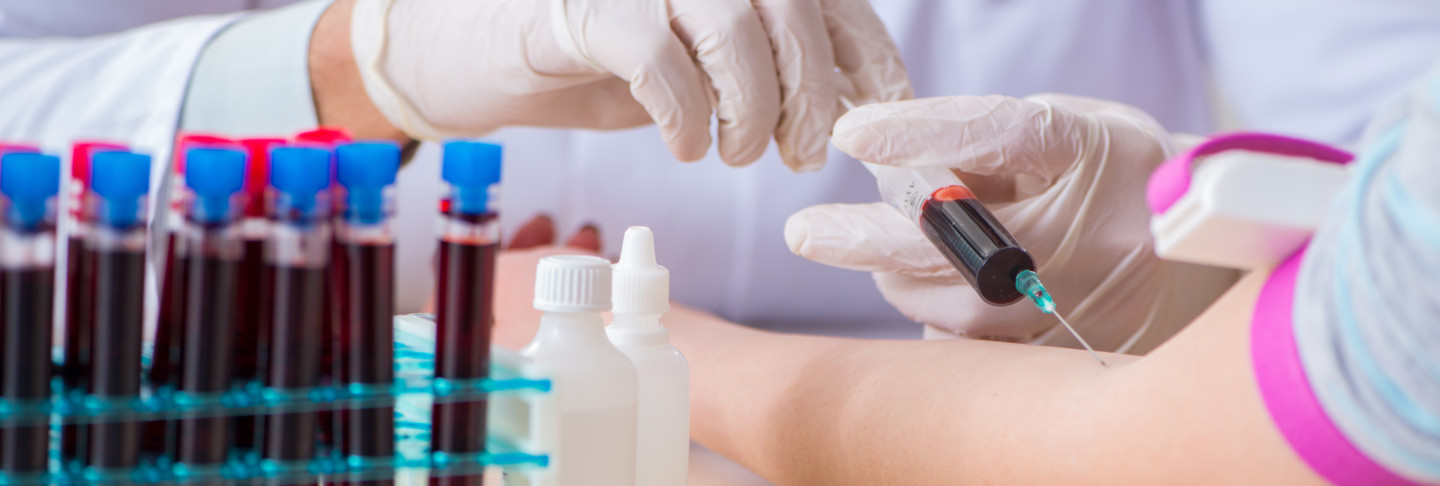What you need to know about needlestick injury prevention to keep your workplace safe
Hundreds of thousands of US healthcare workers – from laboratory and blood banking staff to nurses and physicians – are affected by needlestick or sharps injuries each year.
About 385,000 sharps related injuries are reported each year, but according to The National Institute for Occupational Safety and Health (NIOSH), it’s likely more than half of all needlesticks go unreported.
Devastatingly, dozens of blood-borne pathogens can be transmitted from needlestick injuries including hepatitis B, hepatitis C, and human immunodeficiency virus (HIV).
And, these types of injuries can have a significant financial impact on the healthcare industry, not to mention the psychological impact on the workers involved.
In this article, we’ve looked at what you need to know to help prevent needlestick injuries, and the innovations that can make a huge difference to safety in your workplace.
Causes of needlestick injuries
Needlestick injury is an accidental piercing wound caused by a contaminated sharps instrument, usually a hollow-bore needle.
Whenever a needle is exposed, injuries and infections can happen. It’s one of the most frequent routes of transmission in workplace-acquired blood-borne infections.
However, the circumstances leading to a needlestick injury can depend on the type and design of the device used, and the way it’s handled.
The two most common causes of needlestick injury in the workplace are two-handed recapping, and the unsafe collection and disposal of sharps waste.
Transferring blood between containers (sample transfer) can also be a hazardous practice for needlesticks.
The cost of needlestick injuries
Recognition of needlestick injuries in healthcare came to the fore in the 1980s and 90s after the HIV epidemic drew attention to the potentially deadly nature of healthcare work.
Between 1985 and 1999, there were 55 ‘documented’ cases and 136 ‘possible’ cases of occupational HIV transmission reported to the Centers for Disease Control and Prevention (CDC). Most of these cases involved nurses and laboratory technicians.
Needlestick injury was associated with almost 90% of those documented HIV transmissions. And, exposure to contaminated sharps is responsible for about 40% of cases of hepatitis B and C infections in healthcare workers worldwide.
In addition to the physical effects, healthcare workers can experience serious emotional and mental health issues after a needlestick injury, which can lead to work loss and post-traumatic stress disorder.
It’s estimated that one case of severe infection by bloodborne pathogens can add up to $1 million or more in expenses for testing, follow-up, lost time and disability payments.
Changes to needle safety standards and engineering
Over the years, standards and legislation have been enacted to protect workers from needlestick injury, such as the Occupational Safety and Health Administration’s (OSHA) Bloodborne Pathogens Standard in 1992.
In 2000, the Needlestick Safety and Prevention Act came into force, which requires the use of safer needle devices.
While OSHA does not endorse specific safety devices, the standards are clear that a healthcare facility’s Exposure Control Plan “must document consideration and implementation of appropriate commercially available and effective engineering controls designed to eliminate or minimize exposure”.
And according to NIOSH, improved engineering controls are often among the most effective approaches to reducing occupational hazards and therefore are an important element of a needlestick prevention program.
Examples of these engineering controls include: needleless systems, shielded needle devices, blunt needles, and plastic capillary tubes.
Needle safety device characteristics
NIOSH has documented the desirable characteristics of needle safety devices. These include:
- The device is needleless
- The safety feature is an integral part of the device
- The device preferably works passively (i.e. it requires no activation by the user)
- The user can easily tell whether the safety feature is activated
- The safety feature cannot be deactivated and remains protective through disposal
- The device performs reliably
- The device is easy to use and practical
- The device is safe and effective for patient care
NIOSH Alert: Preventing Needlestick Injuries in Health Care Settings [DHHS (NIOSH) Publication No. 2000–108]
Needle safety technology is constantly improving, with a now available to minimize risk for the three most common causes of needlesticks: recapping, disposal and culture transfer.
Needle safety technology is constantly improving, with a range of products now available to minimize risk for the three most common causes of needlesticks: recapping, disposal and culture transfer.
According to the American Nurses Association Needlestick Prevention Guide, more than 80% of needlestick injuries can be prevented with the use of safer needle devices, which, in conjunction with worker education and work practice controls, can reduce injuries by over 90%.
Checklist for protecting yourself and your workplace from needlesticks
- Avoid the use of needles where safe and effective alternatives are available.
- Help your employer select and evaluate devices with safety features that reduce the risk of needlestick injury.
- Use devices with safety features provided by your employer.
- Avoid recapping needles.
- Plan for safe handling and disposal of needles before using them.
- Promptly dispose of used needles in appropriate sharps disposal containers.
- Report all needlestick and sharps-related injuries promptly to ensure that you receive appropriate follow up care.
- Tell your employer about any needlestick hazards you observe.
- Participate in training related to infection prevention.
- Get a hepatitis B vaccination.
Extract from NIOSH publication ‘What Every Worker Should Know: How to Protect Yourself from Needlestick Injuries’
ITL BioMedical manufactures a range of needle safety devices for blood banks and laboratories. Find out more.

